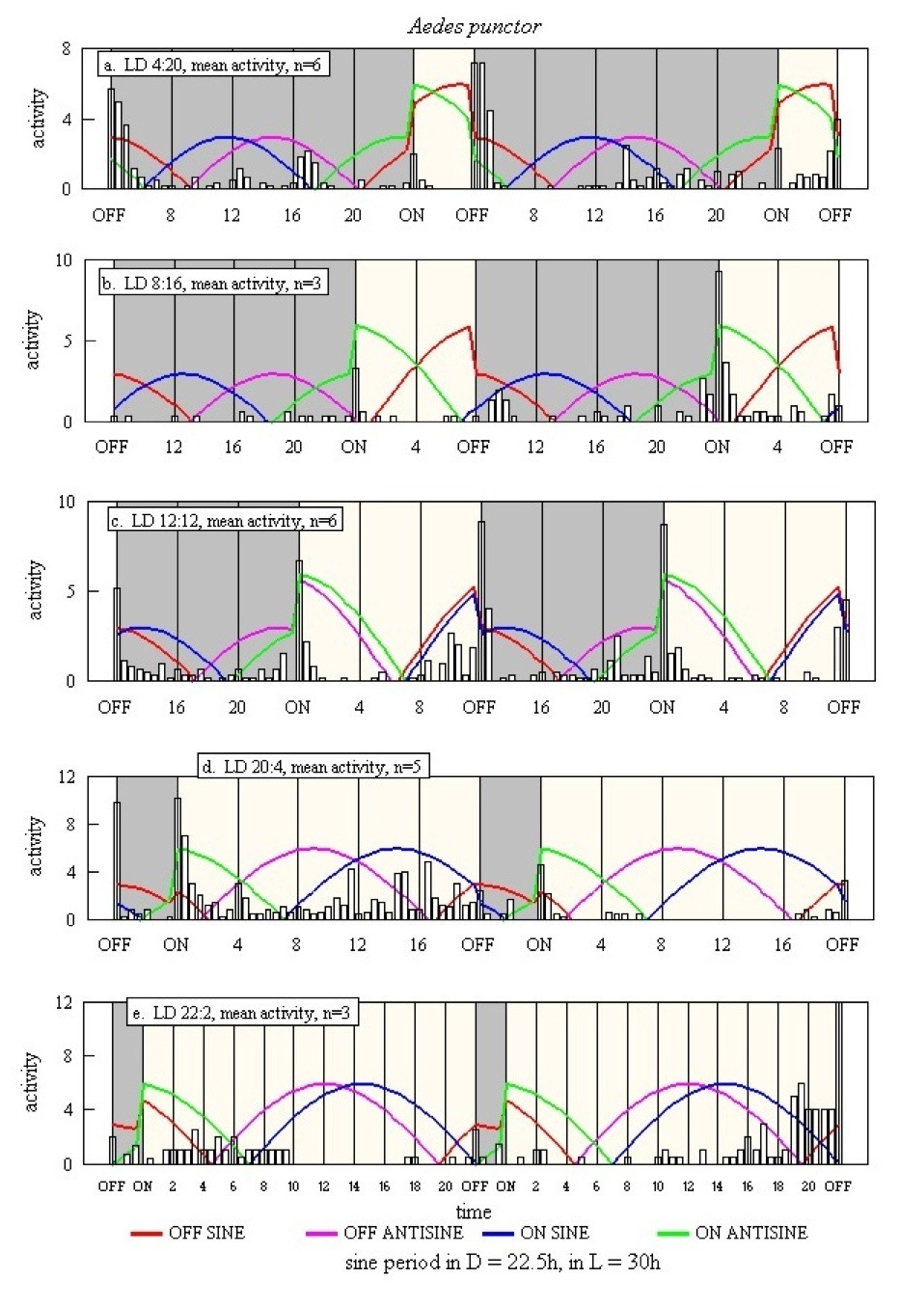

Biological Clocks in Mosquitoes - Section 2
|
Figure 41

The main peaks in all four of the histograms can be seen to be matched by sine wave peaks, notably the OFF SINE and ON SINE, but the OFF ANTISINE matches activity in D at 16h in the night in LD 4:20 and LD 8:16.
|
©1998, 2010 - Brian Taylor CBiol FSB FRES 11, Grazingfield, Wilford, Nottingham, NG11 7FN, U.K. Comments to dr.b.taylor@ntlworld.com |